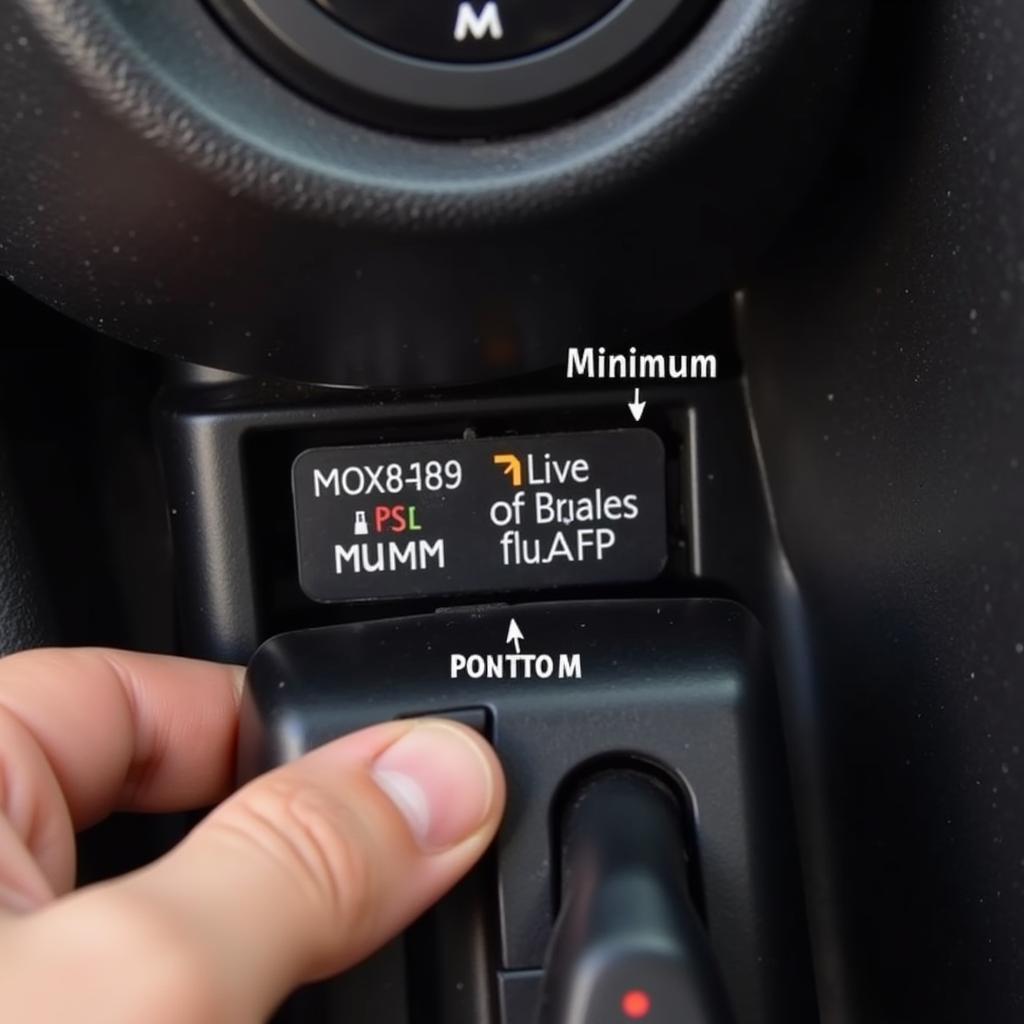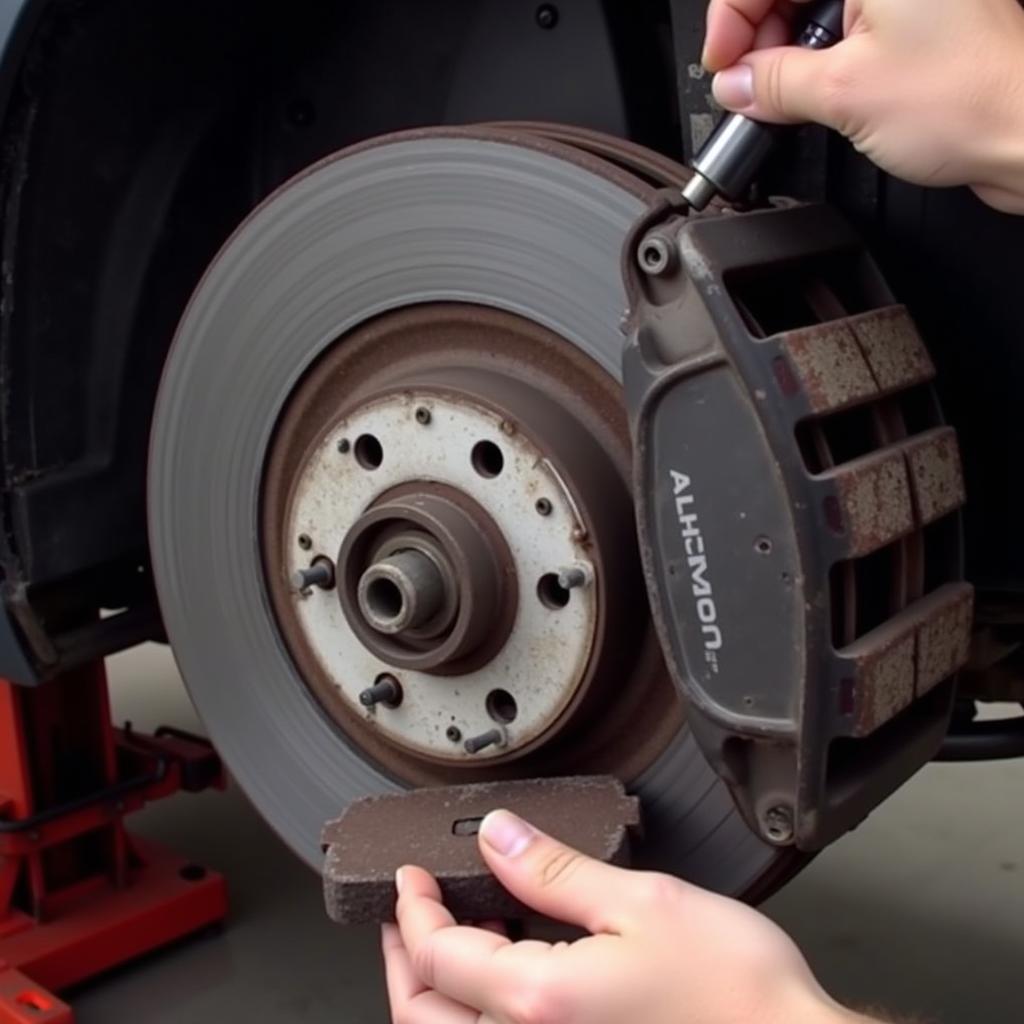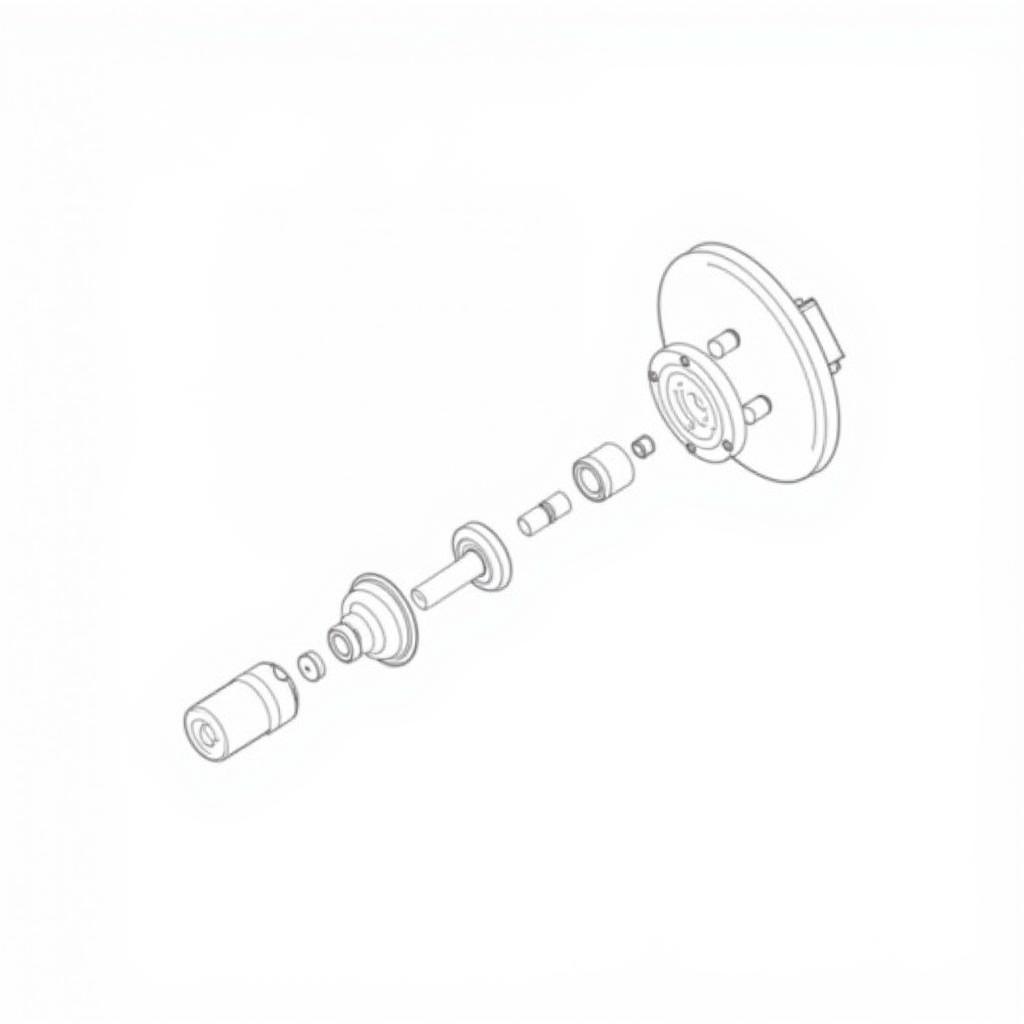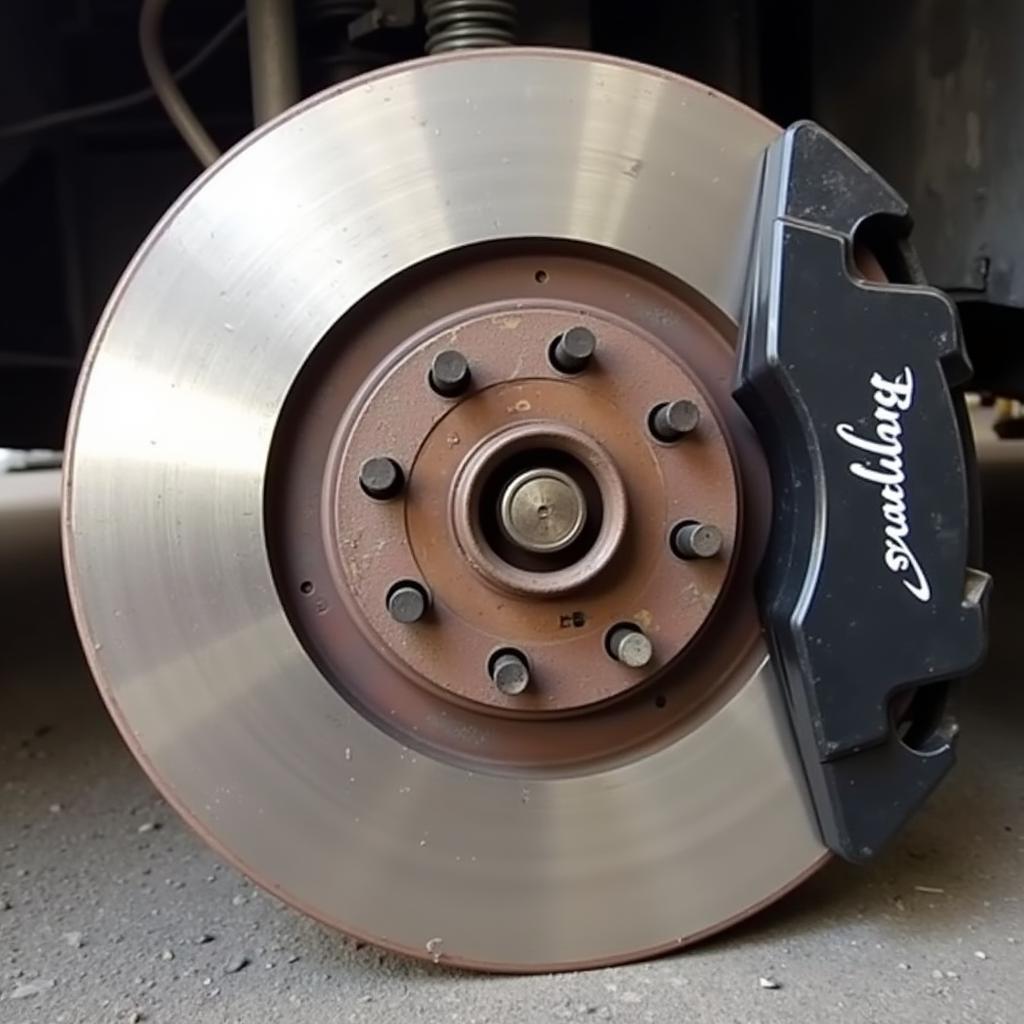A “Hyundai Tucson brake light warning” can be an unwelcome sight on your dashboard. This light usually indicates a problem with your braking system, which is critical for safe driving. This article will explore common causes of a Hyundai Tucson brake light warning and guide you through potential solutions, from DIY fixes to professional diagnostics.
Understanding Your Hyundai Tucson Brake Light Warning System
Your Hyundai Tucson is equipped with a sophisticated system that monitors various components of your brakes. When the brake light warning illuminates, it’s signaling a potential issue, such as:
- Worn Brake Pads: This is the most common culprit. Your brake pads have wear indicators that trigger the warning light when they reach a certain level of thinness.
- Low Brake Fluid: The brake system relies on hydraulic pressure from brake fluid. If the fluid level is low, it could mean there’s a leak, which requires immediate attention.
- Faulty Brake Light Switch: This switch activates your brake lights when you press the pedal. If it malfunctions, your brake lights might not function correctly, triggering the warning.
- ABS Issues: Problems with the Anti-lock Braking System (ABS), such as a faulty sensor, can also trigger the brake light warning.
Diagnosing the Problem: A Step-by-Step Guide
Before you panic, here’s a simple guide to help you pinpoint the cause of your Hyundai Tucson brake light warning:
- Check Your Brake Fluid: Locate the brake fluid reservoir under the hood. If the fluid level is below the “minimum” mark, add the appropriate DOT 3 or DOT 4 brake fluid (check your owner’s manual).
- Inspect Your Brake Lights: Have someone press the brake pedal while you check if all brake lights illuminate. If not, a faulty brake light switch or blown bulbs could be the issue.
- Examine Your Brake Pads: Visually inspect the brake pads through the spaces between the wheel spokes. If you see less than ¼ inch of friction material, it’s time for a replacement.
 Checking Brake Fluid in Hyundai Tucson
Checking Brake Fluid in Hyundai Tucson
Common Solutions for Hyundai Tucson Brake Light Warnings
Depending on the diagnosis, here are some solutions for addressing the brake light warning:
- Brake Pad Replacement: If your brake pads are worn, replacing them is crucial for safety. Consider replacing the rotors as well if they are significantly worn or damaged.
- Brake Fluid Top-Up or Flush: If the brake fluid level was low, top it up to the “maximum” mark. If you notice a frequent need to add fluid, there might be a leak that requires professional attention. A brake fluid flush is recommended every 30,000 miles or as per your owner’s manual.
- Brake Light Switch Replacement: This is a relatively inexpensive part that you can replace yourself. You’ll find instructions in your owner’s manual or online tutorials.
- ABS Diagnostics: If you suspect an ABS issue, it’s best to consult a qualified mechanic for diagnosis and repair.
 Inspecting Brake Pads on a Hyundai Tucson
Inspecting Brake Pads on a Hyundai Tucson
“Ignoring a brake light warning can lead to serious safety risks,” cautions John Smith, a certified automotive technician with 20 years of experience. “Timely diagnosis and repair can prevent costly repairs and ensure your Hyundai Tucson remains safe to drive.”
When to Seek Professional Help
While some fixes are DIY-friendly, others require specialized knowledge and tools. It’s best to consult a professional mechanic if:
- You’re uncomfortable working on your vehicle’s braking system.
- You’re unable to identify the cause of the brake light warning.
- You suspect an issue with the ABS system.
- The brake light warning persists after DIY fixes.
Preventing Future Brake Light Warnings
Here are some preventative measures to minimize the chances of encountering a brake light warning in your Hyundai Tucson:
- Regular Brake Inspections: Schedule brake inspections every 12,000 miles or as per your owner’s manual.
- Mindful Driving Habits: Avoid aggressive braking and coasting to reduce wear and tear on your brake pads.
- Quality Brake Pads: Invest in high-quality brake pads for longer lifespan and better performance.
- Timely Fluid Flushes: Follow the recommended brake fluid flush intervals.
 Hyundai Tucson Brake System Diagram
Hyundai Tucson Brake System Diagram
Conclusion
A Hyundai Tucson brake light warning should never be ignored. Understanding its causes and potential solutions empowers you to address the issue promptly and safely. By following the steps outlined in this article and practicing preventative maintenance, you can ensure your Hyundai Tucson’s braking system remains in optimal condition for countless miles to come.
For more insights and solutions related to car diagnostics and repairs, you can explore our other helpful resources:
Remember, a well-maintained vehicle is a safe vehicle.

